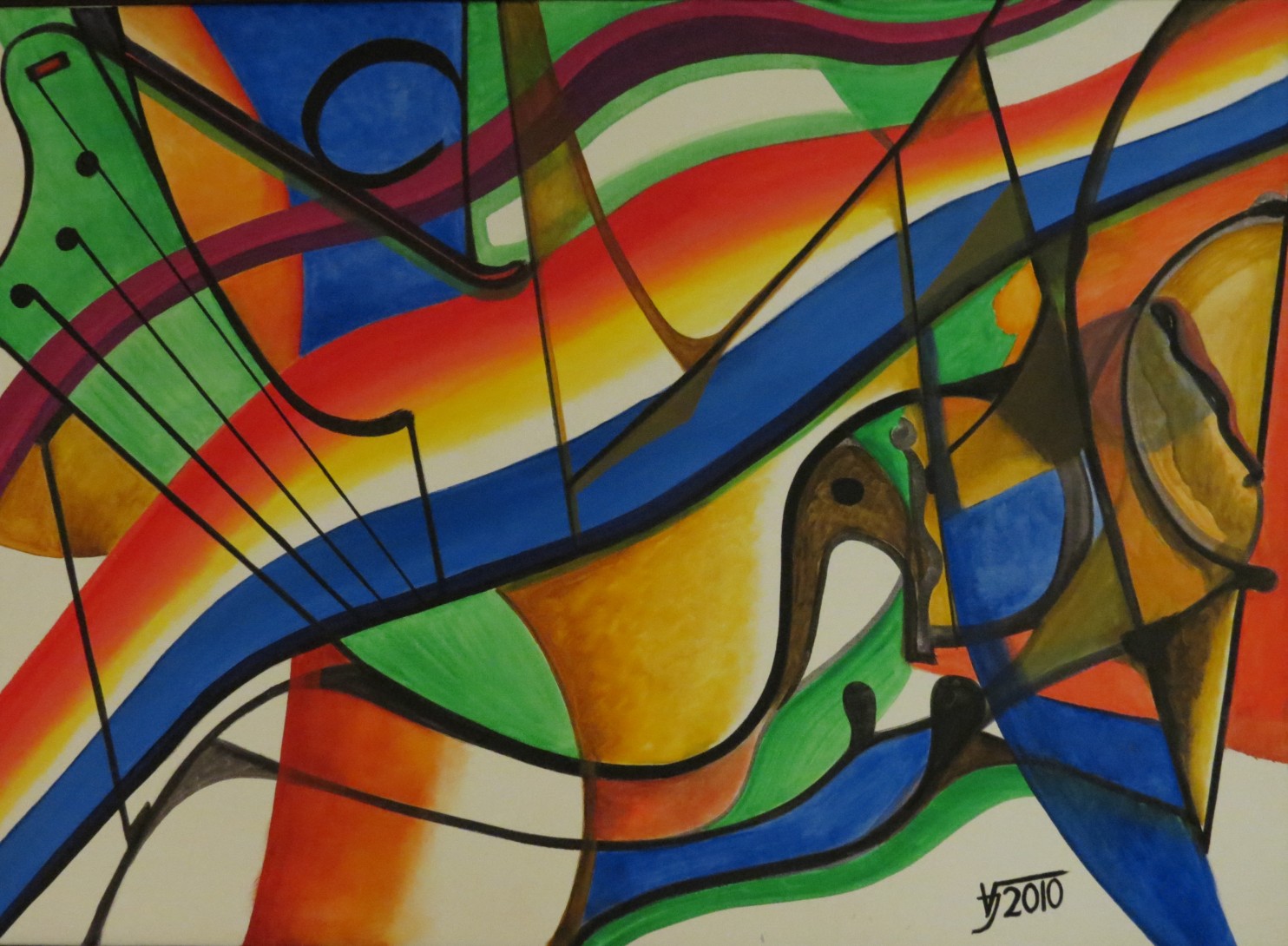
Washington Post – Joseph Vodlan remembers the moment — about 70 years ago — that he became an artist. He was 5 or so years old, and playing with figurines made from pine bark at his family’s home in Slovenia. World War II was in progress, but this summer morning was calm. As he was bending down to pick up a figurine, he was suddenly captivated by a ray of sunshine beaming through a window, quickening the colors in a picture on the wall. His mother was calling him, but he did not hear her.
Washington Post – Joseph Vodlan remembers the moment — about 70 years ago — that he became an artist. He was 5 or so years old, and playing with figurines made from pine bark at his family’s home in Slovenia. World War II was in progress, but this summer morning was calm. As he was bending down to pick up a figurine, he was suddenly captivated by a ray of sunshine beaming through a window, quickening the colors in a picture on the wall. His mother was calling him, but he did not hear her.
It was one of those moments, Vodlan recalls, “when you go in a trance or something — you are totally absent.” After that watershed moment, Vodlan, whose work is now on view at the Slovenian Embassy, became keenly attuned to colors and light. But it wasn’t a foregone conclusion that he would become the internationally exhibited artist he is today. His parents expected that he would run the family farm. But Vodlan had other ideas. He took up drawing and painting in his spare time. And when he finished secondary school, he decided to go abroad for the artistic education he thought he could not get in his homeland, which was then part of communist Yugoslavia. “We were not a communist-oriented family,” Vodlan says by phone from his home in Charlotte, N.C.
In 1957, he emigrated to Austria. “I went over the mountain, just like ‘The Sound of Music,’ ” he recalls. “It was risky at that time. They didn’t ask. They just shoot. Probably I had a guardian angel.”
Vodlan studied at an academy in Linz, Austria, earning money on the side by working on conservation projects, including the preservation of 12th- and 13th-century frescoes. Those gigs taught him the importance of using durable materials, and more.
“Any artist, even a contemporary artist, must be familiar with traditional art, the old art masters,” he says. “Because that’s how you develop the feeling for form, for color.”
In 1963, after graduating from the academy, Vodlan traveled to the United States. “When I was a little boy, I saw a picture of George Washington, and it made an impression on me,” he explains.
He spent time in Cleveland, where there was a Slovenian community that included other artists. He later moved to the New York area, finding that he could make a good living as a graphic designer, working for the likes of General Foods while pursuing his own artistic projects in his spare time.
Over time, his style and approach changed, as seen in the embassy retrospective. In Vodlan’s early years in the United States, his insecurities and anxieties found expression in dark colors, such as in the all-gray tones of a 1964 work, a painting of two people embracing, on view at the embassy.
The colors are relatively subdued in a series of paintings Vodlan created with fresco pigments on paper in the 1960s and ’70s. Some of the paintings look abstract; others suggest hazy, dreamlike landscapes. The fresco pigments, Vodlan says, inspired him to evoke the “primeval and natural.”
Some of his oil paintings from the past two decades display much brighter hues, as well as playful cubist elements. One of the works — 2010’s “Melody,” an ebullient configuration of colors and lines — was displayed for a time at the U.S. Embassy in Ljubljana, the capital of Slovenia, as part of the State Department’s Art in Embassies program. Vodlan’s work also has been exhibited in galleries, museums and showcases in New York City, Ljubljana, Buenos Aires and elsewhere.
Not all of Vodlan’s work at the Slovenian Embassy is two-dimensional. On one wall hangs a 1983 bronze relief of an elderly woman smiling wistfully, with a kerchief tied around her head. It is Vodlan’s mother. The artist says he created the relief with the help of photos after his mother died.
“It was a painful work,” he recalls. “While I was working, my tears were coming down.” But he’s proud of the piece, believing it bears witness to his mother’s strength and tenderness. A version of the relief appears on her tombstone in Slovenia.
Vodlan sees a common denominator in all of his work. “In my art, there is never a violent move or frustration,” he says. “It is always controlled with calm attitude.” That quality reflects what is, for him, a matter of principle.
“In my opinion, art is supposed to express tranquility,” he says, so “the viewer is positively influenced.”
The previous is an excerpt from an article in the Washington Post by Celia Wren. For the full article see: https://www.washingtonpost.com/entertainment/museums/his-parents-wanted-him-to-run-the-farm-but-he-had-other-ideas/2015/07/23/d104b522-2ef1-11e5-8353-1215475949f4_story.html
